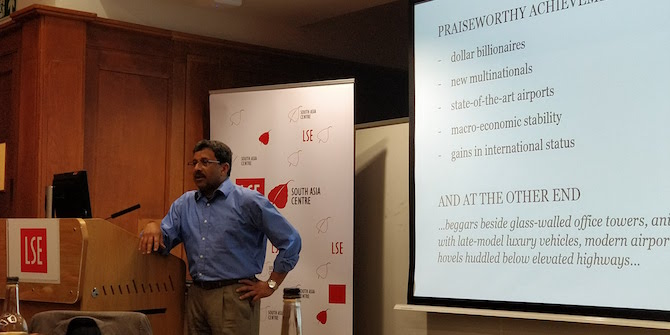 Studying abroad, as many Indian students choose to do, causes a whopping $17 billion loss in revenues every year in India. Mridulya Narasimhan examines the idea of reverse brain drain,and particularity the incentives that are being used to entice Indians back to the country of their birth.
Studying abroad, as many Indian students choose to do, causes a whopping $17 billion loss in revenues every year in India. Mridulya Narasimhan examines the idea of reverse brain drain,and particularity the incentives that are being used to entice Indians back to the country of their birth.
Over 153,000 students leave the country for higher education every year. This is because of grade inflation, 100% cut-off requirements for college admissions, reservation policy and lack of good quality education at home. However, having completed their studies, only 5.2% of these students choose to return home – the rest staying, working and raising a family in their new country.
Breaking the barrier – What is India doing about it?
The government, which has neglected brain drain as a cause for concern for far too long, has in the recent past taken both pre-emptive and retrospective actions to curb the impact of brain drain on India.
As announced by President Pranab Mukherjee, India’s 12th Five Year Plan (FYP) focuses on quality, affordability and accessibility of the higher education system. This can also be interpreted as an attempt to persuade students to stay in India for the purpose of pursuing higher education.
Narendra Modi, India’s current Prime Minister, who once considered the cause unimportant is now taking measures to reverse brain drain. Following China’s footsteps, the Indian government has approached various well-known NRI (non-resident Indian) scientists to place them in appropriate departments under the Ministry of Science and Technology. With Mr. Modi’s explicitly stated agenda of ‘reviving romance for science in India’, this is seen by many as the first step towards establishing a well-oiled system to control and perhaps reverse brain drain.
Modi has also sought to attract businesses the world over to invest and manufacture in India with a ‘Make in India’campaign. This will create jobs and will potentially be followed by a much mooted ‘Think in India’ campaign. These campaigns are designed to encourage students to have the capacity and resources to conduct their research and thereby base their future lives in India.
The economic loss and the human capital depletion suffered for years remains. However, there is some evidence to suggest cause for hope, as the intellectual windfall continues, and those who return (86%) believe that the best days for the Indian economy lie ahead.
Never say never – Pushing and pulling back to India
A wave of students and second generation immigrants are beginning to see benefits in returning to a place they once called home. While no official numbers pertaining to the return migration of skilled workers to India has been relayed by the Indian government, various studies by independent authors and researchers over the past few years endorse this growing trend.
The primary push factor comprises the extensive corporate restructuring which took place in the United States and other developed nations after the recent financial crisis. While many of the developed nations witnessed negative growth and double dip recessions, the Asian market showed remarkable resilience with India maintaining an average of 6.6% annual GDP growth rate in 2011. This made it an incredibly appealing market to return to. This is enhanced by the pro-entrepreneurship culture that has developed in India over the years where it is now perhaps more feasible to imagine an ‘Indian Dream’ rather than an American one.
Furthermore, prejudiced migration policies mean that, even with requisite skills and educational qualifications, immigrants are unable to break through the glass ceiling. Protectionist measures being undertaken by various developed nations in the interest of their own citizens further limit the scope of opportunities for foreign nationals and lead many to consider returning to their country of origin.
There is a growing trend among second generation immigrants of a return, based upon emotional gratification. Within migrant communities, there is often a fascination with life and culture in their country of origin, and a desire to connect with their heritage beyond mere visits.
India’s case of reverse brain drain can be explained through a mixture of emotion, opportunity and government involvement. All of these factors have contributed to the growing trend of Indians returning home, resulting in a significant shift in the well-established Indian diaspora.
This article originally appeared 22nd January on the Development in Action blog.
Cover image credit: flickr/Parth Joshi CC BY-NC-SA 2.0
Note: This article gives the views of the author, and not the position of the India at LSE blog, nor of the London School of Economics. Please read our comments policy before posting.
About the Author
 Mridulya Narasimhan recently graduated from LSE with an MSc in Public Management & Governance. She has been a Capstone Consultant with the World Bank and previously worked in Corporate Strategy for Intertek Plc. in India. Her interest in international development is grounded in the experience of living in India, Bhutan and China. She is on twitter @Mridulya.
Mridulya Narasimhan recently graduated from LSE with an MSc in Public Management & Governance. She has been a Capstone Consultant with the World Bank and previously worked in Corporate Strategy for Intertek Plc. in India. Her interest in international development is grounded in the experience of living in India, Bhutan and China. She is on twitter @Mridulya.







